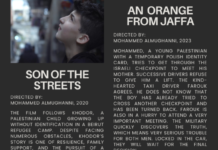Bethan McKernan & Malak A. Tantesh
The Guardian / October 29, 2024
Journalists unable to report and rescue workers unable to save victims of Israeli offensive hindering all movement and communication.
Jerusalem/Gaza – When internet connectivity returned to Jabaliya in northern Gaza after yet another blackout last Thursday, Al-Jazeera journalist Anas al-Sharif took to his social media accounts to let the world know what happened during the hours the area was offline. Israeli airstrikes had hit several houses on the same street in Al-Hawaja neighbourhood, he said, killing or wounding an estimated 150 people – but no one knew for sure.
The ever-tightening Israeli siege of Jabaliya and several other parts of northern Gaza – enforced by tanks and ground troops – meant that civil defence teams and medics could not come to rescue those trapped under the rubble. No reporters could make it either, other than Al-Sharif, who lives nearby. “No civil defence, no coverage, nothing but death and destruction,” he said in a video from the quiet, dark street. “No one is coming to save them.”
Several days later, there are still no official or comprehensive accounts of the strikes on Al-Hawaja, a situation replicated across northern Gaza as movement and communication become increasingly difficult after four weeks of a renewed Israeli offensive on the area.
Israel has routinely jammed Gaza’s phone and internet networks during its year-long campaign against Hamas triggered by the Palestinian militant group’s attack on 7 October 2023. Networks are also often offline because of damage to infrastructure or a lack of electricity or fuel for generators.
Civilians, humanitarians, medics and media workers on the ground in north Gaza, however, say the problem is getting worse, affecting efforts to save lives, as well as journalists’ ability to report the news.
Communication between hospitals, health workers and aid agencies is becoming sporadic, and ground fighting has made travel increasingly dangerous, making it hard to coordinate care and treatment and accurately collect casualty data. The civil defence service suspended activities last Wednesday after crews were attacked by Israeli forces and tank shelling destroyed their last fire engine.
Raja, a 28-year-old pharmacist, along with two friends, did her best to help the wounded after airstrikes in Beit Lahia on Saturday that killed at least 40 people. There was no way to contact the three struggling hospitals still operating in the area, and ambulances never came; an unknown number of people are believed to be buried under collapsed buildings.
“We helped by carrying the injured or transporting them on donkey carts, and we took them to our house. We had a few tools, so we could do some first aid, but we watched all of them take their last breaths. One little boy with his skull open was still alive, I don’t know how,” she said. “That’s what hurts the most, feeling so powerless. If there had been ambulances, most of them would be alive now.”
Israel’s new aerial and ground operation in northern Gaza has killed at least 800 people, according to medics and the health ministry in the formerly Hamas-run territory. On Tuesday morning Palestinian officials said at least 93 people had been killed in another Israeli strike in Beit Lahia.
The estimated 400,000 people clinging on in the north say that the conditions are the worst of the war to date: Israel has attacked hospitals and shelters, and food and water are running out because of a blockade on aid deliveries and sieges focused on Jabaliya, Beit Lahia and Beit Hanoun. Several people The Guardian spoke to said clean water ran out more than a week ago, and they were drinking small amounts of wastewater a day to survive.
The Israeli military denies systematically trying to force Palestinians from the area to flee to the relative safety of the south of the strip.
The telecom blackouts and restrictions on movement are contributing to underreporting, or delayed reporting, of the bloodshed and suffering caused by Israel’s new offensive in the north of the strip.
On top of those difficulties, Israel appears to have stepped up its campaign against Gaza’s embattled journalists: five reporters were killed in Israeli airstrikes over the weekend, and Israel has alleged that another six still working in northern Gaza – including al-Sharif – were members of Hamas or Palestinian Islamic Jihad, potentially turning them into targets.
Israel has killed at least 170 journalists and destroyed 86 media facilities in Gaza to date, according to a new report from the Palestinian Centre for Human Rights.
Fiona O’Brien, the UK director of Reporters Without Borders, said: “We are utterly appalled by the continuing unfounded accusations linking journalists in Gaza to terror groups … Israel publishing documents alleging that is not sufficient proof or a licence to kill and puts them at even higher risk.
“There’s been a systematic attempt by Israel to shut down media coverage of Gaza and stop the story getting out, most obviously by killing journalists.
“Our investigations show at least 32 were targeted because of their work but so far there has been complete impunity.”
Bethan McKernan is Jerusalem correspondent for The Guardian
Malak A. Tantesh is a reporter based in Gaza












